 Submitted by Claire de Lune on
Submitted by Claire de Lune on

All mandalas are designed to guide the viewer into an altered state of awareness through contemplation. This type of contemplation is categorized as a form of "wideeyed" meditation. In general, the art, symbols, and color of a mandala will guide an individual from the distractions of the mind (outer rim of the mandala) to a still center (the center of the mandala).
The Sanskrit meaning of mandala is circle. The circle is a symbol of perfection, eternity, unity and completeness. Given these meanings, it's no wonder mandalas are such important symbols in all cultures. In various spiritual traditions, mandalas may be employed for focusing attention of aspirants and adepts, as a spiritual teaching tool, for establishing a sacred space, and as an aid to meditation and trance induction.

Mandalas are incredibly versatile and can personify any number of meanings for the viewer. The meaning each mandala holds is limited only by the creator and the observer.
Even though it may be dominated by squares or triangles, a mandala has a concentric structure. Mandalas offer balancing visual elements, symbolizing unity and harmony. The meanings of individual mandalas is usually different and unique to each mandala. The goal of the mandala is to serve as a tool on our spiritual journey as it symbolizes cosmic and psychic order.
How to use a mandala:
Along with the meaning of mandala, comes the use of it. There are many uses, the following paragraghs will outline the basic process.
The design of the mandala is to be visually appealing so as to absorb the mind in such a way that chattering thoughts cease, and a more philosophic or spiritual essence envelopes the observer which in turn leads to higher consciousness or awareness. In short, a mandala can be seen as a hypnotic, letting the creative hemisphere of our mind run a little more free while our analytical mind takes a little nap.
That said, we use the mandala as a form of meditation for the purpose of gaining knowledge, primarily the kind that resides within each of us.
Before meditating, we must first set an intention. Normally, we select a mandala that appeals to us. It is good to know what the meaning of mandala you've chosen - or set your own meanings/intention before focusing on it.

For example, focusing Native American labyrinth mandala (above) we know this meaning of mandala relates to beginnings, our enternal nature, and how this is relative to our life journey. So, before meditating on the mandala we set the intention to more clearly understand our life journey, or be shown guidance in a particular area we are having trouble on the path.

Once we have set our intention, we begin to focus on the mandala. Let your eyes take in the beauty of the designs, allowing your mind to wander as it will. If your mind begins to chatter (i.e., I should do laundry, have to get milk, need to finish that report for work), simply bring your attention back to the beauty of the mandala. Get inside the mandala, simply fall into it, swim in it, let it absorb all of your attention. As you fall into the mandala, you will begin to feel lighter, and intuitive thoughts may arise. Relax and float with the thoughts and feeling that come to you. If you begin to feel lost, uncomfortable or if you get the "chatter" again, simply focus your attention back on the mandala.
Each observer has different experiences. However, the overall consensus is that meditating with the mandala leaves the observer relaxed, and he/she comes away with a resolution or clarity concerning the intention that was set before the meditation.
Types of Mandalas:
Teaching Mandalas
The teaching mandala is symbolic and each shape, line and color represents a different aspect of a philosophical or religious system. A student of that religious system learns to create his own mandala in accordance with prescribed principles of design and construction. This type of mandala visually symbolizes everything the student has learned. The teaching mandala that is created can be described as a colorful, mental map, which summarizes religious doctrine.
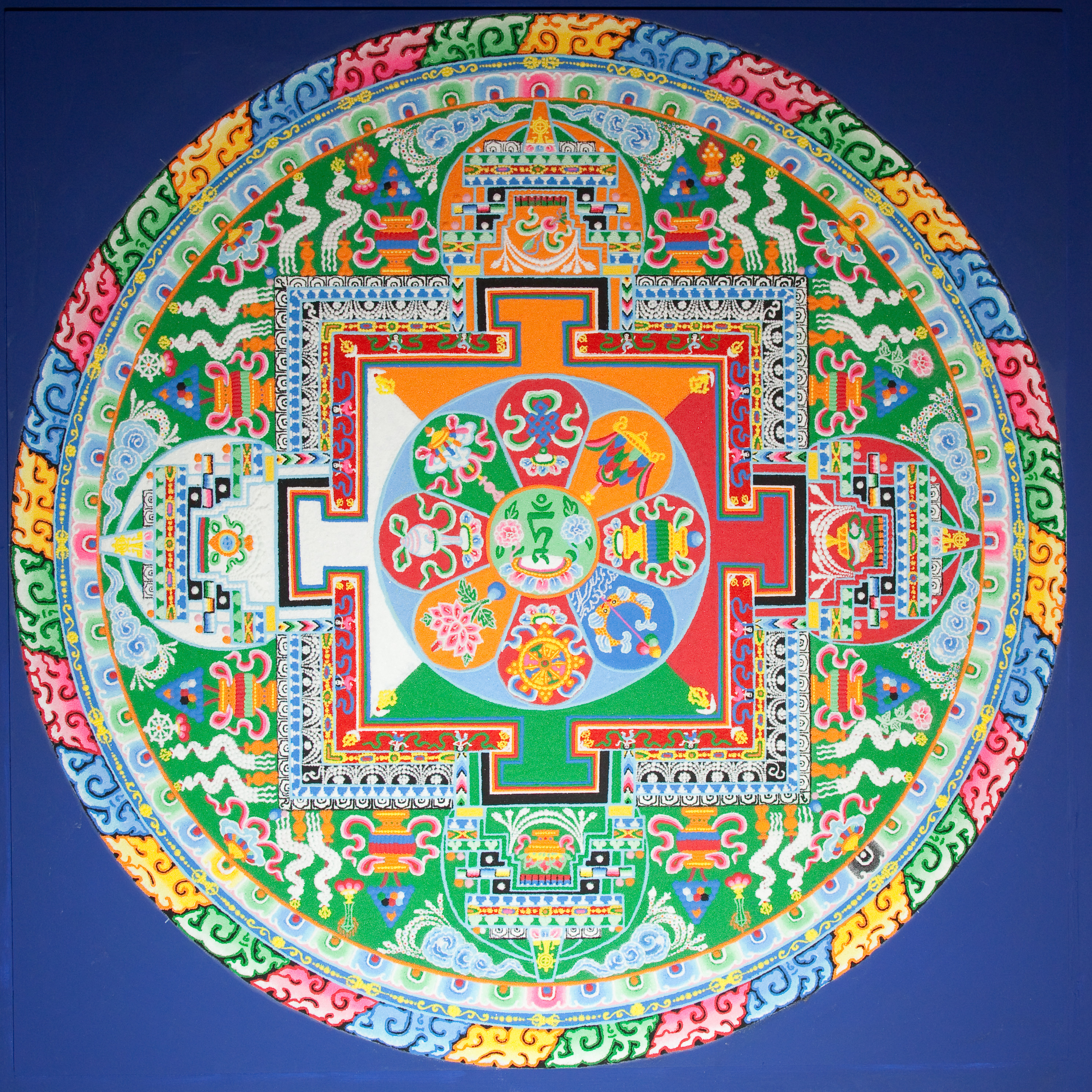
Healing Mandalas
A healing mandala is simpler and more intuitive than a teaching mandala. It is usually created for the purpose of meditation, and to invoke a feeling of calm and inner wisdom. Mandalists create mandalas. They can be used to focus the mind on the source of all being, which brings a sense of peace and of healing.

Sand Mandalas
Buddhist monks as well as Navajo Indians have a religious tradition of creating sand mandalas. These are intricate sand paintings using many symbols, and are made with colored sand. In both cultures, the sand mandalas represent the impermanence of human life. The sand paintings are meticulously constructed over many days and ritual ceremonies are enacted over them in both traditions.
Mandala Symbols
Some symbols used in mandalas include the bell, which represents feminine energy. This bell is open and empty and also allows wisdom to come in. The diamond is another common symbol. It represents the mind, which is clear and can reflect different energies. The wheel with eight hubs is associated with dharma, or the path of righteous action, which leads to true wisdom. The lotus is associated with Buddha. It reaches toward the light even though its roots are in the mud.

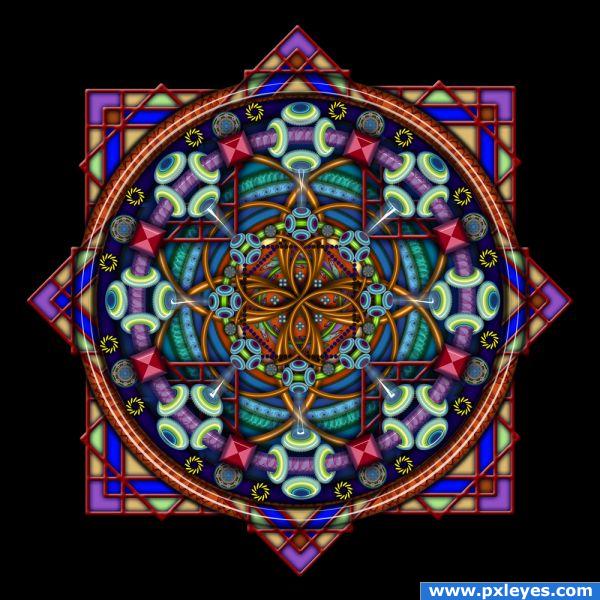
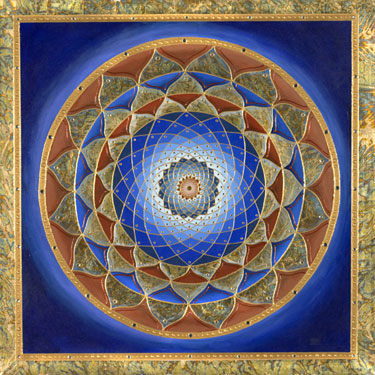
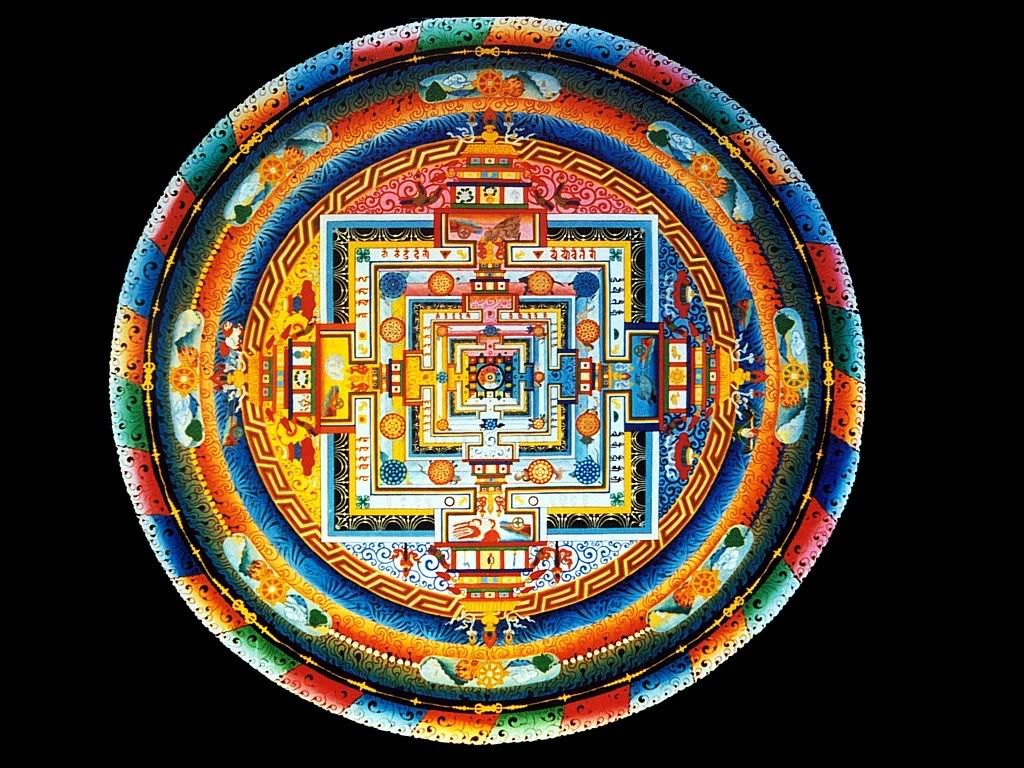

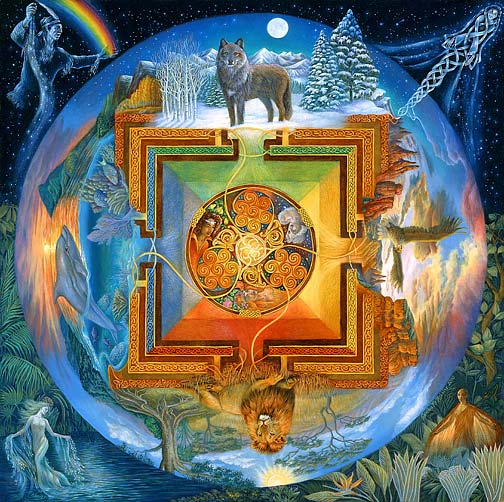



- 8733 reads